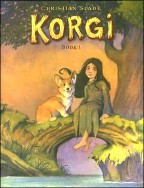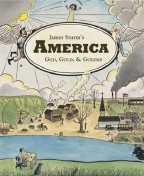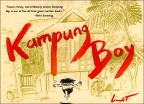Graphic Novel Review: The Best American Comics 2007
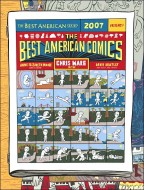 With two years of The Best American Comics
With two years of The Best American Comics down now, it’s clear just how much the individual editor can influence the choice of comics. Last year, Harvey Pekar leaned towards autobiographical comics and towards long, complete works. For this second year, Chris Ware similarly goes where we’d expect him to go and picks a lot of formalist stories — but also a lot of autobiography, particularly the overly-serious type. It’s dangerous to compare annuals in any case, especially when they change editors, but I have to admit that I thought 2006 was a stronger book than 2007; this year’s edition contains a batch of “experimental” comics that I found pointless and a pure waste of space.
And there’s also the meta-question of what are the “best comics,” since even the “100 Distinguished Comics” list in the back matter — from series editor Anne Elizabeth Moore, and which also apparently served as the first cut of stories from which Ware built this anthology — lists only a tiny handful of stories from the major comics publishers. So this series is essentially for the best American independent comics — not superheroes, or adventure stories of any type from the big companies. Perhaps future volumes will challenge that idea, but, for now, there’s no sign that Best American is open to anything more fantastic or adventurous than Charles Burns’s great horror comic Black Hole.



 First was a cute little book (about the size of those “impulse purchase” books you sometimes see in Hallmark stores by the cash register) called Micrographica by Renee French. According to the front flap, this originally appeared online, and each of the drawings (one to a page) was originally drawn at about one centimeter square, which French did to keep the drawing loose by not allowing any redrawing. The story follows three small rodents of some kind (maybe guinea pigs?) who discover a “crapball” and then have odder adventures. It reads a bit like a black and white, colloquial version of a Jim Woodring story – weird things happen in an entertaining way, but the voices of the rodents is very modern-American, unlike Woodring. The story also features a much larger rodent-thing, unexplained facial swelling, a giant mountain of crap, an abandoned sandwich, and more. Hey, it’s only ten bucks – how can you go wrong?
First was a cute little book (about the size of those “impulse purchase” books you sometimes see in Hallmark stores by the cash register) called Micrographica by Renee French. According to the front flap, this originally appeared online, and each of the drawings (one to a page) was originally drawn at about one centimeter square, which French did to keep the drawing loose by not allowing any redrawing. The story follows three small rodents of some kind (maybe guinea pigs?) who discover a “crapball” and then have odder adventures. It reads a bit like a black and white, colloquial version of a Jim Woodring story – weird things happen in an entertaining way, but the voices of the rodents is very modern-American, unlike Woodring. The story also features a much larger rodent-thing, unexplained facial swelling, a giant mountain of crap, an abandoned sandwich, and more. Hey, it’s only ten bucks – how can you go wrong? Jeremy Tinder’s Black Ghost Apple Factory is more like a normal comics pamphlet (despite being only about four inches by six); it’s stapled, 48 pages, and contains a number of different stories. The seven stories here are all pretty clearly “indy” – they feature odd characters doing twisted versions of real-world activities, and usually have something to do with interpersonal relationships. (Also, in time-honored indy-comics fashion, those relationships are sad, depressing and unfulfilling.) Only two of the stories are overtly autobiographical — and one of those features Tinder befriending a bear, so you know it’s metaphorical at best — which is a nice change. Some of these stories are funny and some are touching; all work well and strike true. And that’s darn good a for a five-buck comics pamphlet.
Jeremy Tinder’s Black Ghost Apple Factory is more like a normal comics pamphlet (despite being only about four inches by six); it’s stapled, 48 pages, and contains a number of different stories. The seven stories here are all pretty clearly “indy” – they feature odd characters doing twisted versions of real-world activities, and usually have something to do with interpersonal relationships. (Also, in time-honored indy-comics fashion, those relationships are sad, depressing and unfulfilling.) Only two of the stories are overtly autobiographical — and one of those features Tinder befriending a bear, so you know it’s metaphorical at best — which is a nice change. Some of these stories are funny and some are touching; all work well and strike true. And that’s darn good a for a five-buck comics pamphlet.
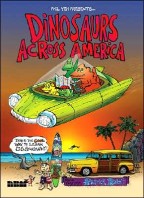 Today I’ve got three books that either are for kids or look like they should be, so, if any of you are allergic to greasy kids stuff, just move on to the next post.
Today I’ve got three books that either are for kids or look like they should be, so, if any of you are allergic to greasy kids stuff, just move on to the next post.